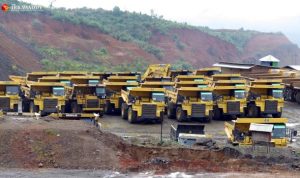Balancing Human Rights and Environmental Protection with Diplomacy and Investment
By Burma Partnership • August 22, 2016 Daw Aung San Suu Kyi traveled to China this past 17 August 2016, continuing on a diplomatic tour that has seen the State Counselor visit Laos and Thailand since taking power in April 2016. According to the state-owned Global New Light of Myanmar, the trip has so far involved discussion on Chinese development assistance, disaster response, and the role of China in Burma’s ongoing peace process.
Daw Aung San Suu Kyi traveled to China this past 17 August 2016, continuing on a diplomatic tour that has seen the State Counselor visit Laos and Thailand since taking power in April 2016. According to the state-owned Global New Light of Myanmar, the trip has so far involved discussion on Chinese development assistance, disaster response, and the role of China in Burma’s ongoing peace process.
The most contentious issue on the agenda, however, was expectedly a conversation on the stalled Chinese-backed Myitsone mega-dam project. The project, which has contributed to the dampened relations between Burma and China that Daw Aung San Suu Kyi hopes to repair, was ground to a halt in 2011 under President Thein Sein. The proposed location of the project – at the head of the Irrawaddy in Kachin State – was met with intense public backlash from environmentalists and human rights defenders who were concerned about long-term environmental damage and the forced displacement of local communities. These fears were further compounded by the widespread belief that China’s investment into Burma was largely exploitative, with little consideration for transparency and accountability.
So far, Daw Aung San Suu Kyi has signaled she is willing to work with the Chinese on restarting the Myitsone Dam, pledging an investigation into the investment project that will determine how it can best benefit both China and Burma. Most recently, 60 civil society organizations (CSOs) in Burma released an open letter to Chinese President Xi Jinping urging his government to halt plans for re-opening the Myitsone Dam. The primary concerns of the CSOs related to the fact that the dam’s geographical placement – located along the Sagaing Fault – made it more likely to be affected by seismic activity, which could result in large-scale local damage if the dams were ever to collapse. Other CSOs also pointed out that the project would likely involve the displacement of thousands of nearby residents.
After the Myitsone mega-dam project was suspended in 2011, numerous Chinese investment projects have become the focus of similar environmental and human rights concerns throughout Burma. Longstanding protests around Letpadaung Copper Mine, owned and operated in a joint venture between China’s Wanbao Mining Copper Ltd. and the Union of Myanmar Economic Holdings, came to a head in 2012 when authorities used white phosphorus on nearby residents who were peacefully expressing concern over the mine’s impact on the environment, its effects on health and the displacement of local communities. Further protests in 2014 at the mining site resulted in one death and several injuries, again at the hands of operation’s security forces and subsequent arrests and imprisonment of human rights defenders who protested the violence. Despite the ongoing concern over Letpadaung Copper Mine, operations resumed in May of this year.
Chinese investment into Burma has also been linked to stoking ethnic tensions and conflict in places such as Kachin State, along with increased militarization by the Burma Army around development projects.
Daw Aung San Suu Kyi’s trip to China came on the same day 26 Shan CSOs called on the State Counselor to reconsider plans for six dam projects, jointly owned by Thai, Chinese and Burmese investors, along the Salween River. A representative from the Namtkhon Social Assistance Organization, Nang Nwan Mo, highlighted the position of the CSOs, stating, “We, the local ethnic populations, will be the one who suffer the negative consequences of these dams, and it is not likely we will get to enjoy the benefits. These dams will destroy our environment and our farmlands will be flooded.”
Nang Nwan Mo was likely referring to the over 10,000 Shan farmers who would be displaced as a result of the hydropower project. In addition, the Shan activists cited concerns that local livelihoods, which depend on the Salween River for agricultural purposes, would also be affected. Further, the location of the project, a region that has seen longstanding conflict between the Burma Army and ethnic armed organizations, would contribute to further tensions as the warring parties attempted to determine who had control over the project sites. In the case of at least one of the dam projects, the Nong Pha Dam, Burma will not only be forced to contend with the issues highlighted by the Shan activists, but will also only benefit from 10% of its total electrical output – the other 90% will be exported to China.
The call from CSOs regarding the Salween River dams should be considered when moving forward with other developmental projects, including the Myitsone mega-dam. Foreign investment into Burma must be undertaken with full consideration of how it may contribute to conflict, increase ethnic tensions, reduce sustainable local livelihoods, lead to the displacement of people and communities and/or result in environmental degradation. Burma’s people – particularly ethnic groups who have borne the brunt of civil war since independence – along with the environment and natural resources must be prioritized over any investment opportunity.
Tags: Burma Partneship, Business and Human Rights, Dams, National League for DemocracyThis post is in: Blog
Related PostsDevelopment for Whom?









 All posts
All posts